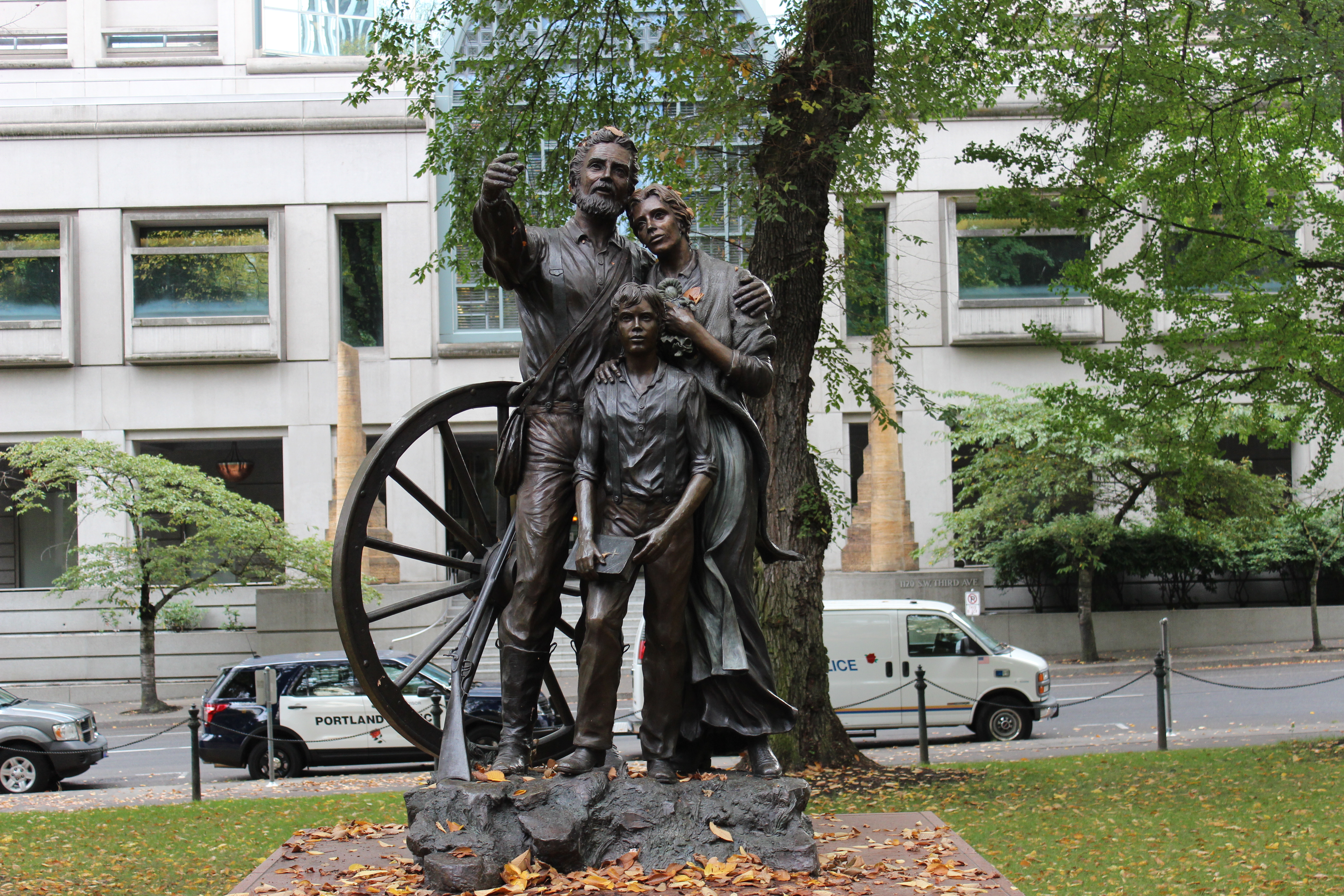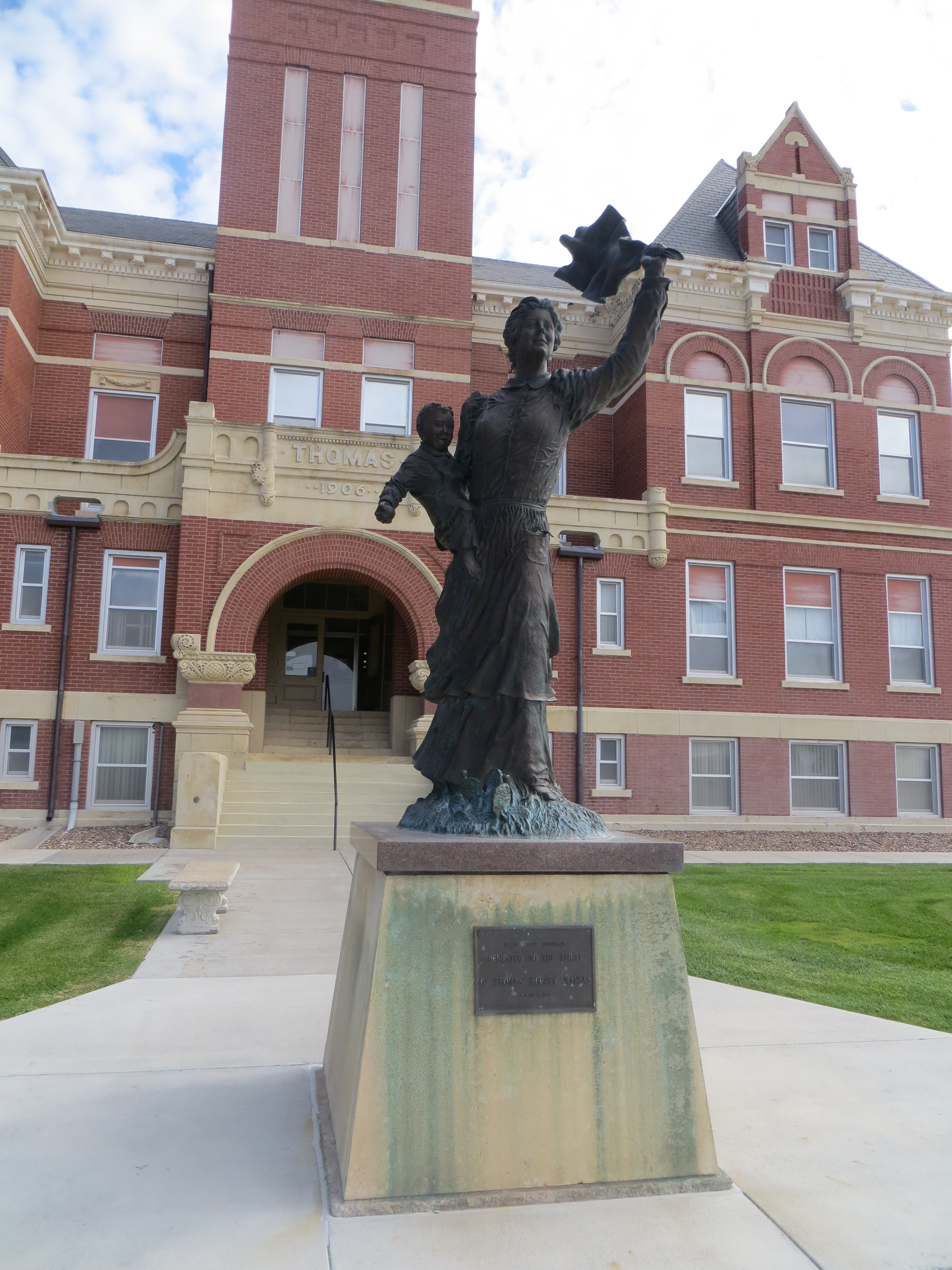Challenging Pioneer Memory
Cynthia Culver Prescott, University of North Dakota
The June 2015 shooting of nine African-American worshippers at Emanuel African Methodist Episcopal Church in Charleston, South Carolina, by a white supremacist sparked many calls to retire use of Confederate flags not only in that state but throughout the American South. Outrage over those killings and well-publicized killings of unarmed black civilians by white police officers galvanized public opinion in many parts of the United States against the display of the Confederate battle flag over the South Carolina state capitol and in the South more generally. Activists have also worked to remove or relocate Confederate monuments that were erected during the late nineteenth and early twentieth centuries on university campuses and in other public spaces.
Far fewer have protested the West’s 125 monuments celebrating generic white settlers and pioneer mothers. “Cowboys and Indians” history may be passé, but highly gendered frontier narratives remain powerful. A few Western communities have challenged monuments to white dominance embodied in pioneer-themed monuments in recent years, but monuments to generic pioneer mothers are still widely revered. For example, Portland, Oregon, sought to make David Manuel’s 1993 Promised Land statue more inclusive by replacing planned excerpts from actual Oregon Trail diaries on its base with an inclusive-sounding quote of questionable historicity credited to Thomas Jefferson. Critics attacked the statue as racist and as ugly, but no one publicly questioned its depiction of a strong, forward-looking pioneer father and son, docile mother and deceased daughter.

David Manuel, The Promised Land, bronze, Portland, Oregon, 1993
All pioneer monuments are not created equal. Although they utilized similar imagery, the specific ways that frontier women and men were depicted in pioneer mother statues varied by artist and audience in important ways. Moreover, changes in pioneer monument design reflected and helped to reinforce changing American racial and religious identity and gender norms. In the early twentieth century, Americans erected dozens of statues to commemorate so-called “pioneers” who carried supposed “white civilization” westward. By the 1920s, western monuments typically featured a sunbonneted “Pioneer Mother” striding westward with a young child, armed with a Bible or rifle. After World War II, pioneer monuments usually represented a frontier family, emphasizing the role of the patriarch or adolescent son, with the pioneer mother playing a supporting role in the background. In recent years, a few western communities have erected more inclusive monuments, but many more have erected yet more statues of sunbonneted white “pioneer mothers.”
Each monument’s design and location influences how it is viewed, and by whom. The placement of a monument has a significant impact on the ways in which it is perceived by its viewers. A lone white stone pioneer woman standing in an out-of-the-way cemetery in Ellis, Kansas, sends a very different message than a similar statue placed in a prominent location on a college campus quadrangle. Placing a pioneer woman monument in front of a county courthouse or statehouse suggests a greater political role for women than does one placed in a community park or near a commercial structure. A monument that stands alone encourages viewers to ponder what it commemorates, while several standing together that utilize similar iconography can reinforce one another, as do the Confederate monuments on Richmond, Virginia’s Monument Avenue. But placing a monument among other, seemingly unrelated sculptures can strike a discordant note that challenges viewers to ponder its significance (as does the Arthur Ashe statue on Monument Avenue), or can encourage the public to approach it as just another piece of public art without commemorative power. Presumably most people who view David Manuel’s bronze pioneer family in Portland’s Chapman Square view it as just another piece of the city’s public sculpture collection, and do not recognize that The Promised Land and two nearby sculptures – a bronze elk and stone Spanish-American War memorial – all celebrate different aspects of nineteenth-century white conquest.

Charlie Norton, Spirit of the Prairie, bronze, Colby, Kansas, 1985
So should we tear down pioneer monuments? Push them aside to decrease their visual impact? Erect interpretive plaques that explain their historical context and intended meaning? There is no one-size-fits-all solution. But it is time for us to begin these difficult conversations, so that future generations will learn what happened in the past, and how our memories of the past have changed over time. That is how we will build a more inclusive future.
This post is drawn from Cindy Prescott’s book, tentatively titled Pioneer Mothers and the All-American Family: Memory in the Making of the Settlers’ West, which is under contract with the University of Oklahoma Press. To read more about this project, check out this post about her digital research methods, and her website, www.pioneermonuments.net.

Pingback: Cowgirls and the Discourses of Patriarchy and Feminism in Country/Western Music | Rural Women's Studies
Pingback: Nursing Clio Sunday Morning Medicine